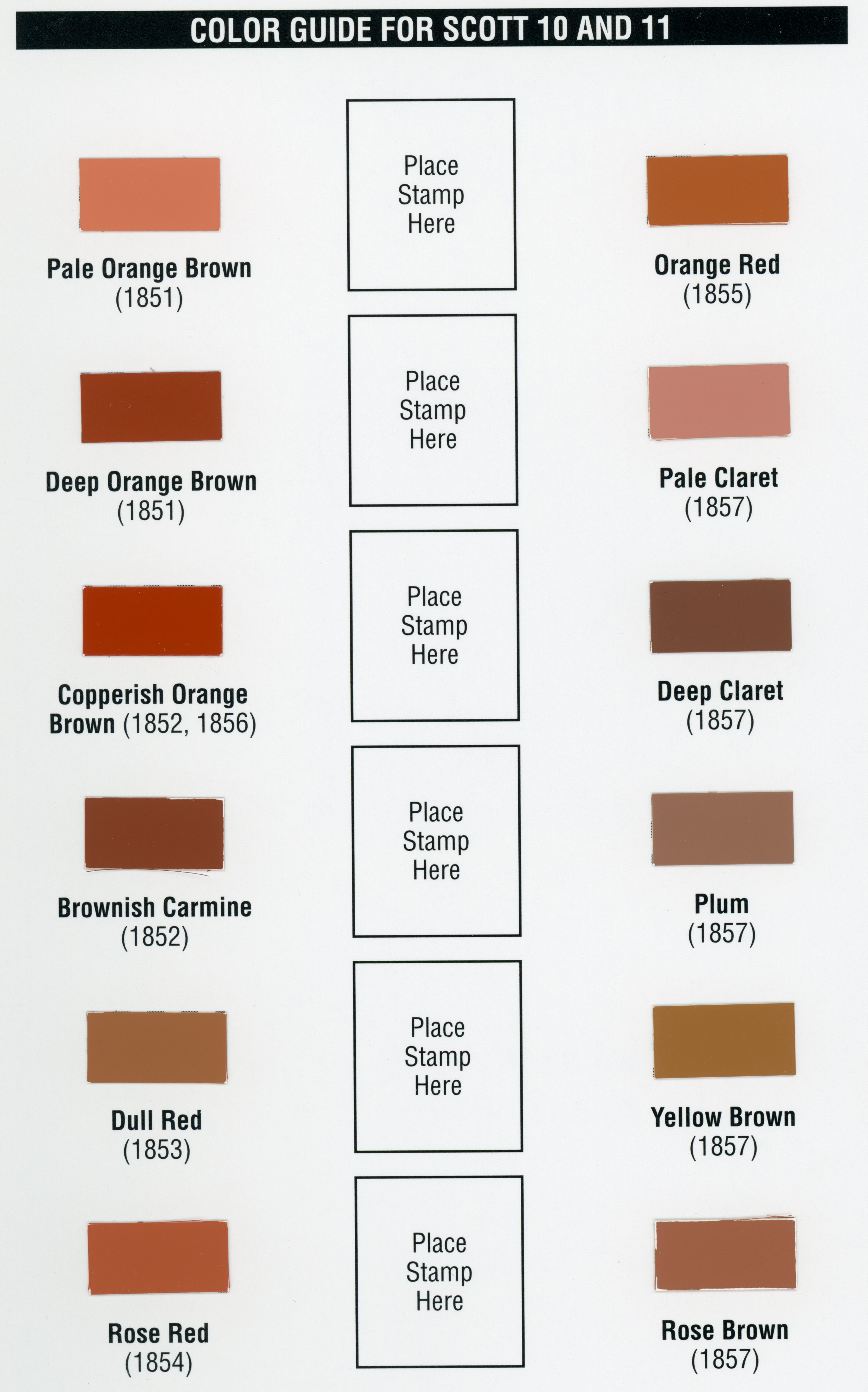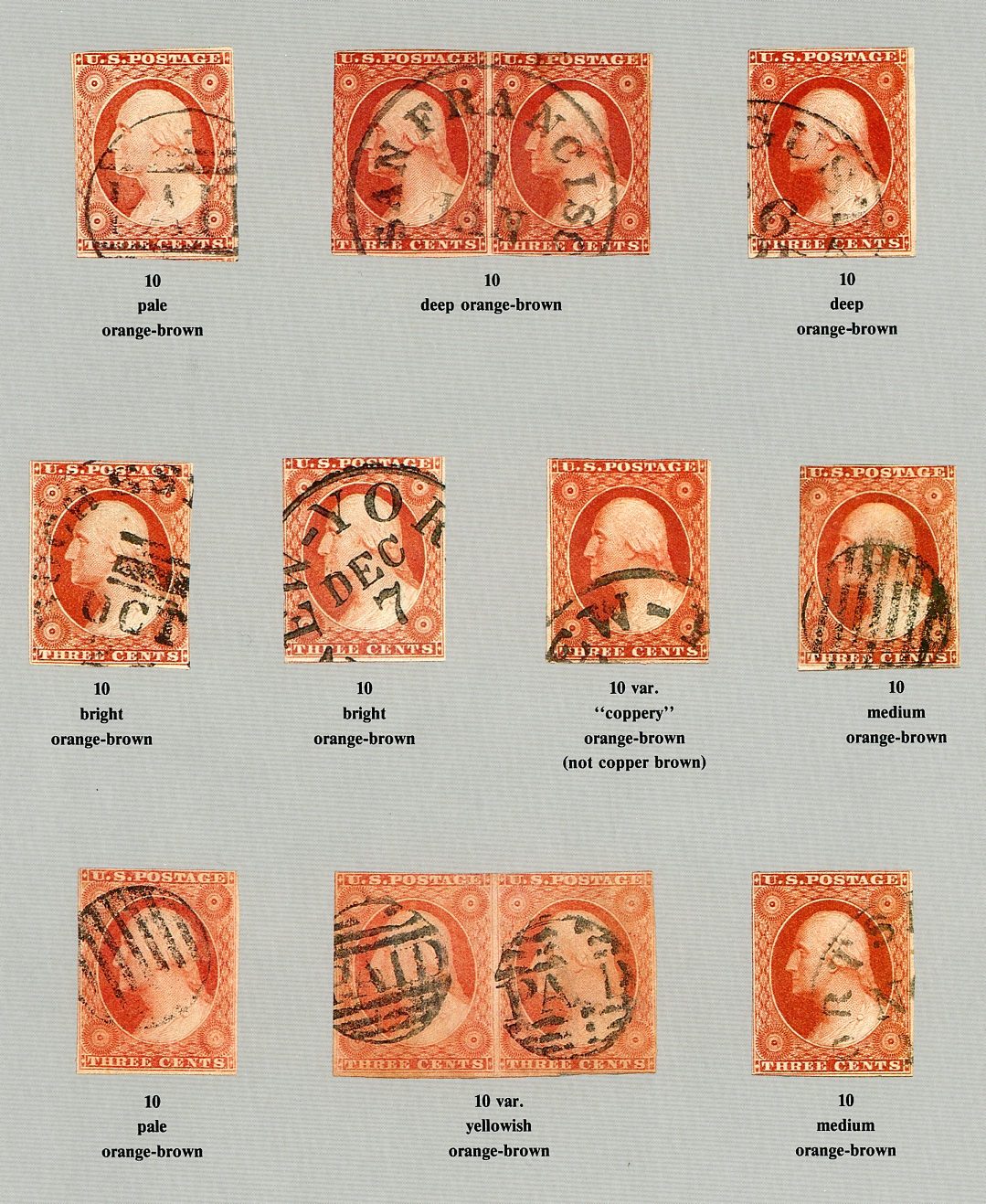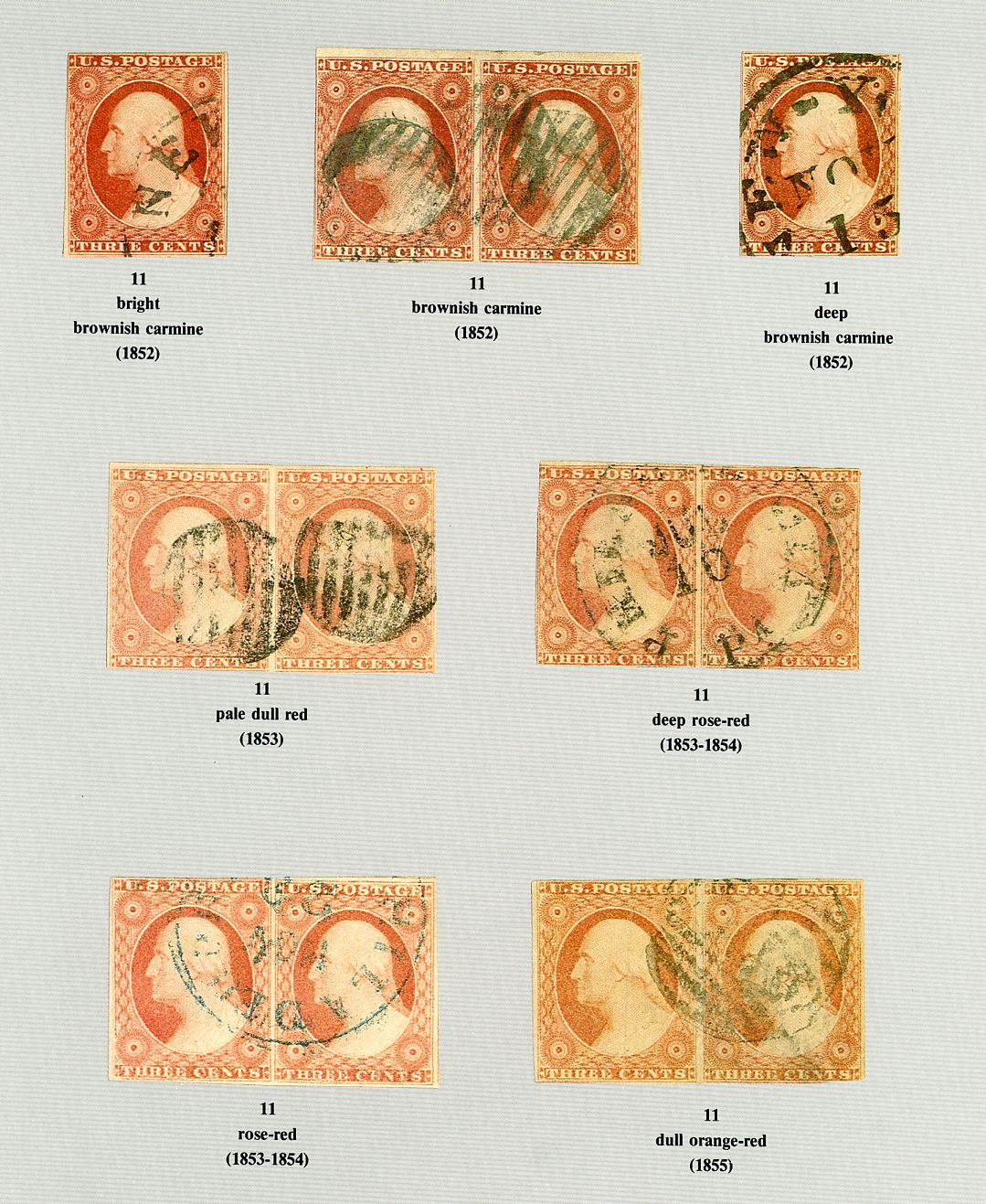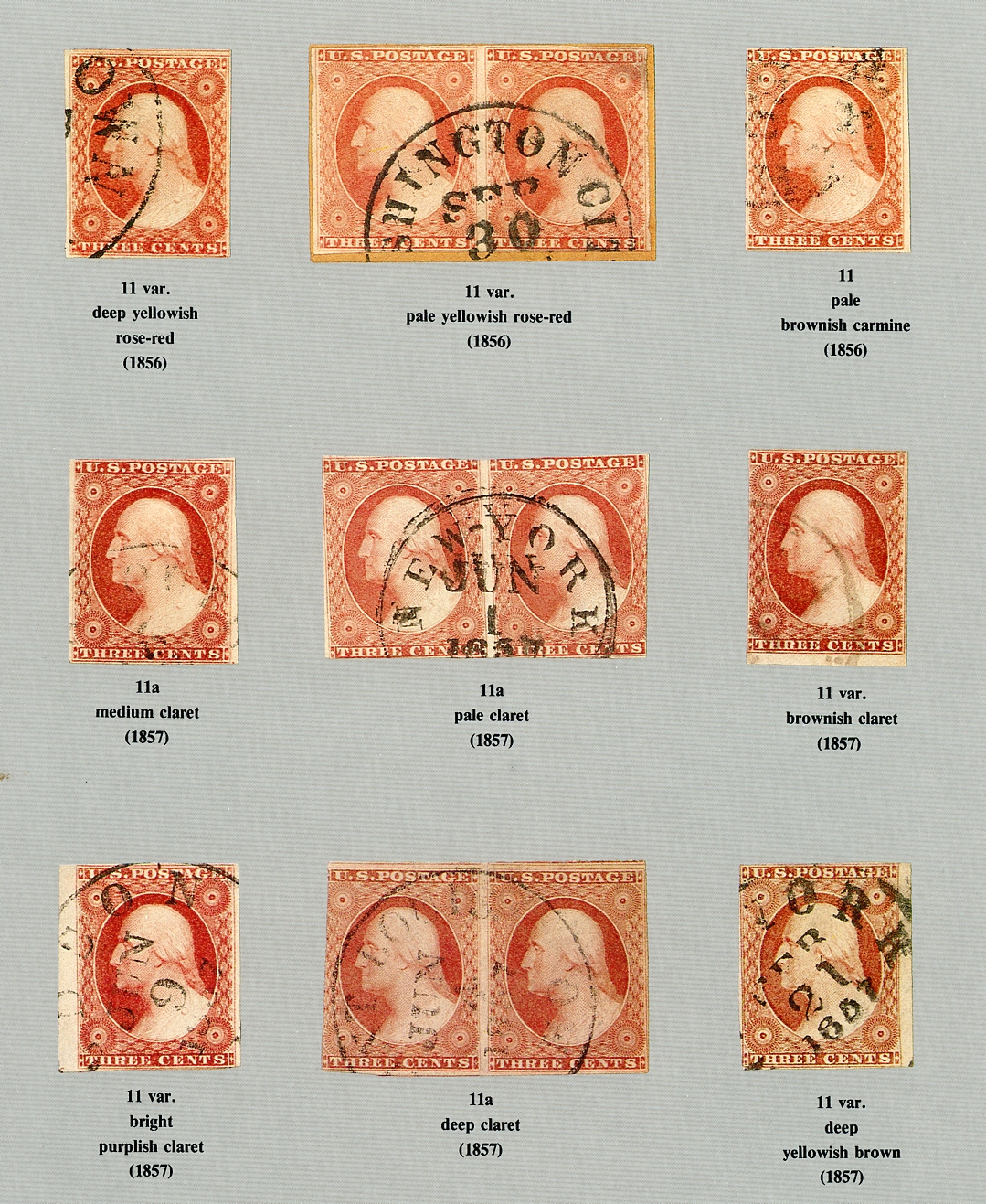Identifying The Plates:
Following Dr. Chase's book, the first step in plating a stamp is to identify its plate. With practice, it is usually possible to narrow your choices to one or two plates. The steps Dr. Chase suggests are 1 - determine if the stamp has two, one, or no inner lines; 2 - determine if the stamp is orange-brown or not; 3 - determine the heaviness, clarity, and extent of recutting on the stamp. We shall call non-orange-brown plates "Dull Red", which is the commonly used (although very incomplete) color category for those plates. The chart below summarizes his process:
Step 1 - None, One, or Two Inner Lines:
Like the book says, determine if your stamp has two, one or no inner lines. If it has two inner lines, you have just narrowed your stamps to consider to nine plates or 1,800 stamps; if it has one inner line, you are looking at four plates, or 800 stamps; and, if it has no inner lines, you are looking at six plates or 1,200 stamps. Refer to the Recuts section to see more specifics about the primary inner lines for the 2,600 stamps. But, this is clearly too many stamps to evaluate, so once you know the answer to step 1, go on to step 2.

Step 2 - Color - Orange-Brown or NOT (Dull Red):
All scanning for this website was done on an Epson Perfection V600 Flatbed Photo Scanner at resolutions of 1200 dpi or higher.
Color is extremely important to plating. However, for Plating, the goal regarding Color is to determine whether your stamp is Orange Brown or NOT. If it is Orange Brown, then, with rare exceptions, you know you are looking at the five early Orange Brown plates (1E, 1i, 2E, 5E, 0). If it is NOT Orange Brown, you are looking at the eight later Dull Red plates (1L, 2L, 3, 4, 5L, 6, 7, 8).
Color is difficult to determine. Some people have an eye for color; most don't. Color is most readily determined by comparing known plated stamps with other stamps. It is interesting that with all of the visual appeal of the Web, the one thing the Web does not do a great job of representing accurately are stamp colors. In reviewing much material available on the web, the same colors can be seen in a wide variety of apparent color. For in-depth exploration of all the colors of the 3¢ stamp refer to the Resources section, where there are a couple of excellent articles on color; and, also to the Chase-Color section where Dr Chase's Color study is presented.
A 2002 article in Linns discusses this issue in detail.
To illustrate this difficulty, three color profiles are presented for this stamp. The first color profile is a small educational excerpt scanned from my copy of the Scott Specialized Color Guide for United States Stamps:

The second color profile is scanned from my copy of Encyclopedia of Colors of United States Postage Stamps by R.H.White. I am told this very expensive book does not do a very good job of showing accurate colors for the 3 Cent Stamp. However, it is useful to show another point of view:



The third color profile is taken from a variety of web images with their labeled colors. Please understand the colors shown are LIKELY NOT accurate representations due to monitor, scanner, and rendering differences between computers, web sites, and browsers.










